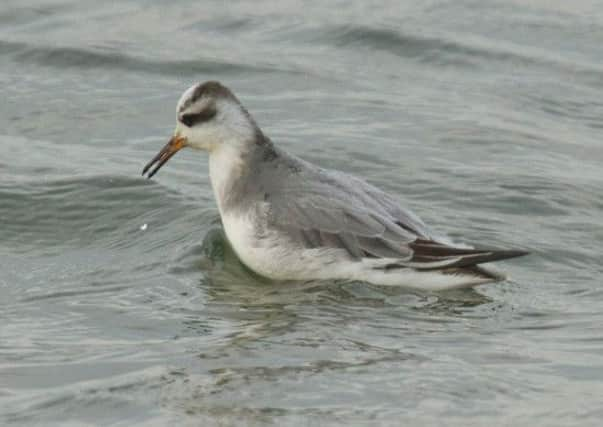Birdwatch: The grey phalarope


In Yorkshire up to three have been present off Filey Brigg, others off Flamborough Head and Spurn, and one inland on the D reservoir at the Tophill Low reserve near Driffield.
Phalaropes are a real oddity of the bird world, waders that spend up to 11 months of the year at sea and for which they are equipped with webbed feet and extra dense breast plumage to give them greater buoyancy.
Advertisement
Hide AdAdvertisement
Hide AdThe grey phalarope is known as the red in North America where it’s seen in bright red breeding plumage around lonely ponds and lakes on the Arctic tundra. It also breeds in Greenland and on other Arctic islands while the most southerly breeding sites are on Iceland.
After leaving breeding sites in July and August they move south into the Atlantic reaching wintering sites by November. It is during this migration that gales can sweep them towards our shores.
There are about 200 seen here each year, usually single birds but sometimes in large numbers off the Irish and Cornish coasts. North Sea sightings are thought to be of birds from Iceland.
Another odd thing about phalaropes is their extraordinary way of feeding. They spin round and round in tight circles to stir up little creatures in the water and bring them to the surface bending over to pluck these up without stopping or even slowing down.
Advertisement
Hide AdAdvertisement
Hide AdAnother bird, the little auk, blown here from the High Arctic by strong winds, continued to be seen along the Yorkshire coast this week with some close inshore off Filey Brigg, one in the entrance to Scarborough Harbour and others in the North Bay and the Humber estuary. One was picked up by a fisherman on the beach at Spurn and later released.
Other sightings at Spurn included a Siberian chiffchaff, six common chiffchaffs, brant geese, three Lapland and 14 snow buntings, two black redstarts and a yellow-browed warbler. Up to 27 snow buntings were seen at Flamborough, eight at Filey and 15 over Bempton Cliffs reserve.
A pomarine skuas flew up the Humber as far as the Humber Bridge where it was attacked by a peregrine falcon.
Arctic and great skuas, red-throated and great northern divers, long-tailed ducks and little gulls were also seen offshore.
Advertisement
Hide AdAdvertisement
Hide AdThree Slavonian grebes were seen off South Landing, Flamborough and three were still being seen on Hornsea Mere.
Up to 20 marsh harriers have been seen in the air together on the Blacktoft Sands reserve in the late afternoons while the first two hen harriers of the autumn, a ringtail and a male, are also back. There are also regular sightings of a merlin and peregrine falcon.
Four long-eared owls are roosting on the Fairburn Ings reserve near Castleford while more short-eared owls continued to arrive on the east coast.